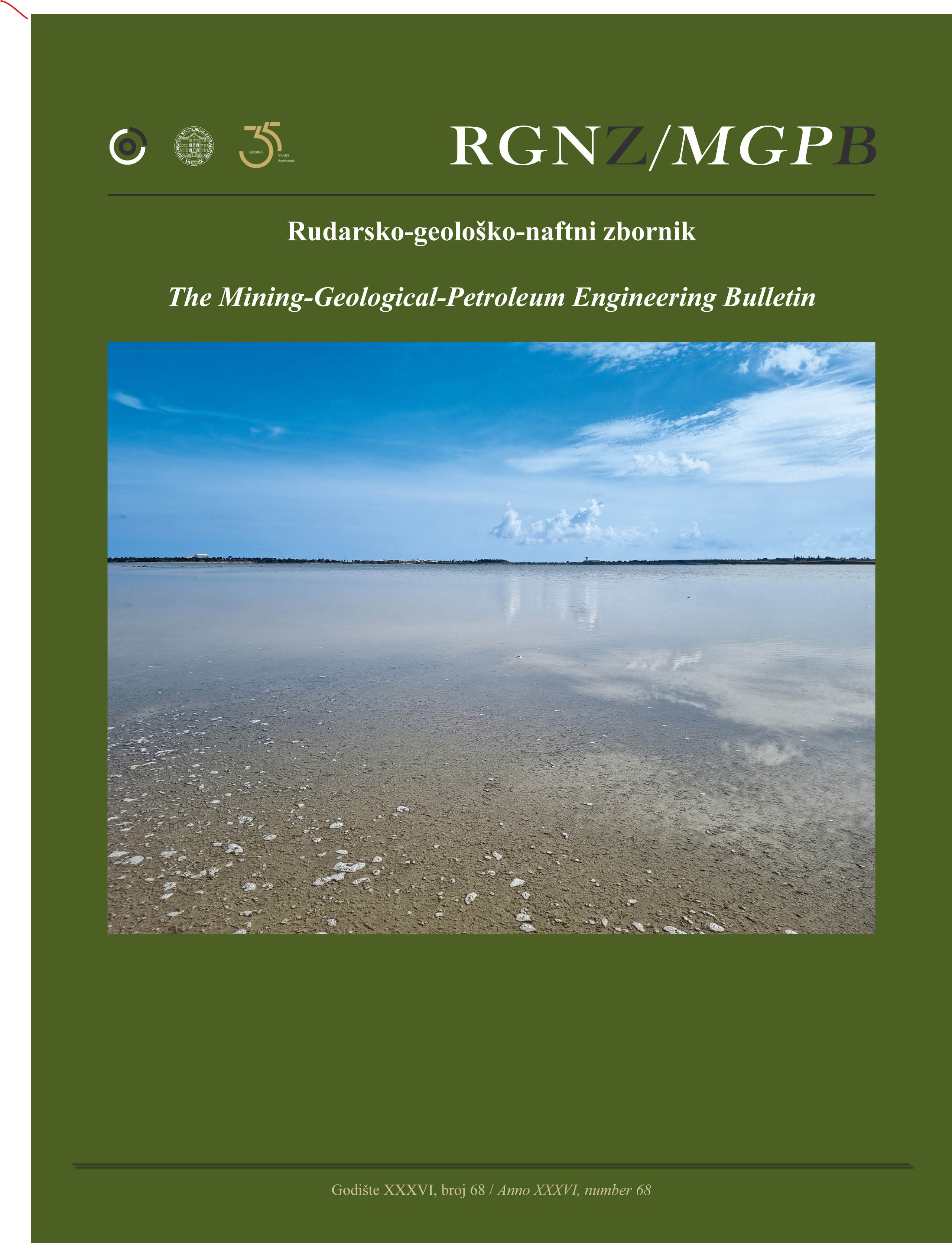A Review of Chan Plot Application and Recent Advanced Models for Diagnosing Excessive Water Production
DOI:
https://doi.org/10.17794/rgn.2024.2.12Keywords:
excessive water production, water oil ratio, diagnostic plot, well log, machine learningAbstract
Water is one of the major fluids associated with the operational cycle of the oil industry that must be carefully considered due to its environmental, treatment facility, and economic impacts. Over the years, various methods have been developed to identify excessive water production. These methods range from reliable and expensive ones, such as well-logging records, to less accurate methods that utilize available production and water-oil ratio data, such as the Chan plot. The Chan plot emphasizes that well production can exhibit various patterns of excessive water production, including constant water-oil ratios, normal displacement, channeling, and coning. However, manual interpretation of these plots is often confusing due to the noise present in the actual data. Machine learning models have improved interpretation accuracy, but limitations remain in detecting evolving water production patterns. This paper reviews the application of Chan plots and their integration with existing diagnostic tools for diagnosing excessive water production. It then focuses on a recent advanced model that leverages machine learning specifically designed to improve the interpretation of Chan plots. The review highlights the limitations of traditional interpretation techniques and explores how the recent advanced model can address these limitations. Additionally, the paper briefly discusses the potential of an interactive model for the continuous monitoring of water production patterns. Finally, the paper offers recommendations for future research directions.
Downloads
Published
How to Cite
Issue
Section
License
Copyright (c) 2024 Ahmed Hamdoon, Mohammed Abdalla Ayoub , Khaled Abdalla Elraies

This work is licensed under a Creative Commons Attribution 4.0 International License.
Creative Commons-BY
Authors who publish with this journal agree to the following terms:
In agreeing this form, you certify that:
- You read the ethical codex of the RGN zbornik available at journal web.
- You submitted work is your original work, and has not previously been published and does not include any form of plagiarism.
- You own copyright in the submitted work, and are therefore permitted to assign the licence to publish to RGN zbornik.
- Your submitted work contains no violation of any existing copyright or other third party right or any material of an obscene, libellous or otherwise unlawful nature.
- You have obtained permission for and acknowledged the source of any illustrations, diagrams or other material included in the work of which you are not the copyright owner.
- You have taken due care to ensure the accuracy of the work, and that, to the best of your knowledge, there are no false statements made within it.
- All co-authors of this submitted work are aware of, and in agreement with, the terms of this licence and that the submitted manuscript has been approved by these authors.
Publication licence
You retain copyright in your submitted work, according to journal license policy (CC-BY). By signing this form you agree that RGN zbornik may publish it under the publication licence. In summary the licence allows the following:
Anyone is free:
- To copy, distribute, display, and perform the work.
- To make derivative works.
Under the following conditions:
- The original author must always be given credit.
- The work may not be used for commercial purposes.
- If the work is altered, transformed, or built upon, the resulting work may only be distributed under a licence identical to this one.
Exceptions to the licence
In addition to publishing the work printed under the above licence, RGN zbornik will also enable the work to be visible online.
The journal editorial can change the licence rules anytime but it cannot retroactively restrict author(s) rights.


